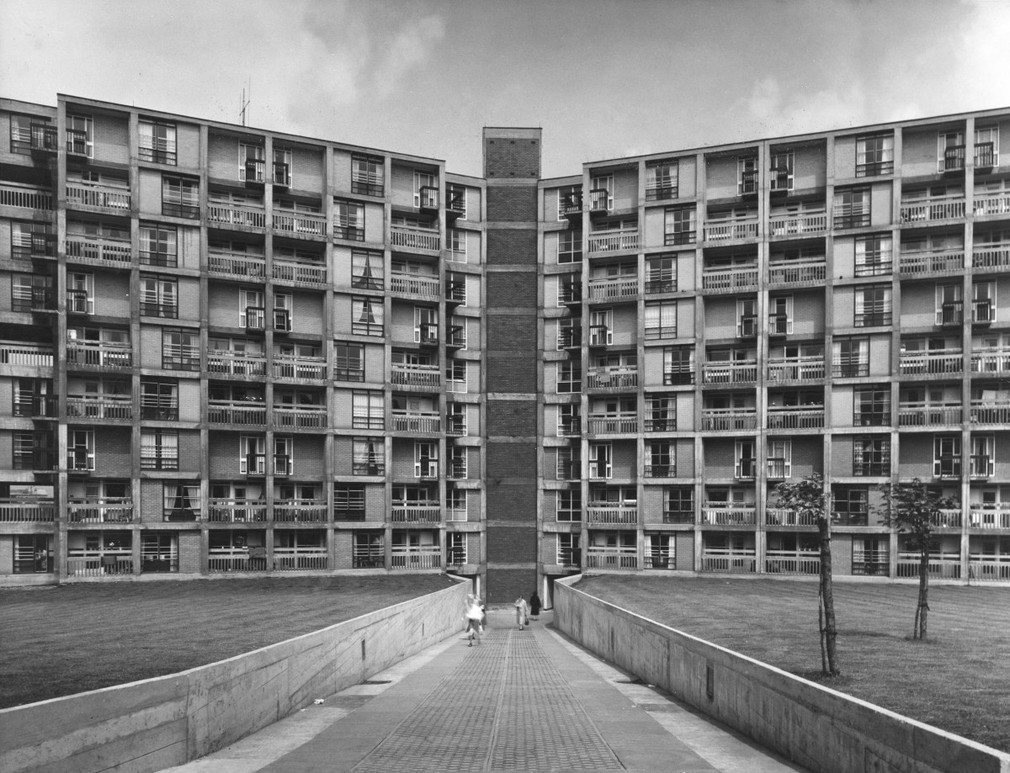Futures Found
The Real and Imagined Cityscapes of Post-war Britain
18 Feb - 29 May 2017
FUTURES FOUND
The Real and Imagined Cityscapes of Post-war Britain
18 February — 29 May 2017
‘Futures Found’ explores the contrasts between the ambitions for Britain’s new post-war cityscapes and the varied futures that were subsequently created.
Through six case studies, proposed by guest curators, the Futures Found display presents the parallel and often conflicting narratives that have developed around a selection of post-war projects since their creation. The display includes references and material drawn from film, music, literature and art, as well as the lived experiences of residents and social activism. Together they challenge the perceived sense of failure of these projects and instead show a much wider and more nuanced view of what this architecture created and inspired.
You will discover the genesis of early social housing in the Narkomfin building in Moscow and follow the development to post-war housing estates such as Park Hill in Sheffield. Alongside this, the display explores the heavily contested fate of the Aylesbury Estate in London and juxtaposes it with the completely different architectural approach of the Brandon Estate, located less than a mile away in southeast London.
From investigations into the changing attitudes to public space in post-war housing estates, to the demise and subsequent revival of St Peter’s Seminary in Cardross, Futures Found takes the viewer through a multitude of different examples of post-war architecture. Whether through looking at the University of Essex or NCP car parks, this display provokes conversation and takes the discussion about post-war architecture beyond a solely aesthetic appreciation of the subject.
Guest curators:
Victor Buchli, Department of Anthropology, UCL
Owen Hopkins, Sir John Soane’s Museum
Helen Ikla, Architecture Department, Royal Academy of Arts
Penny Lewis, Lecturer in Architecture, University of Dundee
Jules Lubbock, Emeritus Professor of Art History, University of Essex
Tom Wilkinson, History Editor, The Architectural Review
The Real and Imagined Cityscapes of Post-war Britain
18 February — 29 May 2017
‘Futures Found’ explores the contrasts between the ambitions for Britain’s new post-war cityscapes and the varied futures that were subsequently created.
Through six case studies, proposed by guest curators, the Futures Found display presents the parallel and often conflicting narratives that have developed around a selection of post-war projects since their creation. The display includes references and material drawn from film, music, literature and art, as well as the lived experiences of residents and social activism. Together they challenge the perceived sense of failure of these projects and instead show a much wider and more nuanced view of what this architecture created and inspired.
You will discover the genesis of early social housing in the Narkomfin building in Moscow and follow the development to post-war housing estates such as Park Hill in Sheffield. Alongside this, the display explores the heavily contested fate of the Aylesbury Estate in London and juxtaposes it with the completely different architectural approach of the Brandon Estate, located less than a mile away in southeast London.
From investigations into the changing attitudes to public space in post-war housing estates, to the demise and subsequent revival of St Peter’s Seminary in Cardross, Futures Found takes the viewer through a multitude of different examples of post-war architecture. Whether through looking at the University of Essex or NCP car parks, this display provokes conversation and takes the discussion about post-war architecture beyond a solely aesthetic appreciation of the subject.
Guest curators:
Victor Buchli, Department of Anthropology, UCL
Owen Hopkins, Sir John Soane’s Museum
Helen Ikla, Architecture Department, Royal Academy of Arts
Penny Lewis, Lecturer in Architecture, University of Dundee
Jules Lubbock, Emeritus Professor of Art History, University of Essex
Tom Wilkinson, History Editor, The Architectural Review

